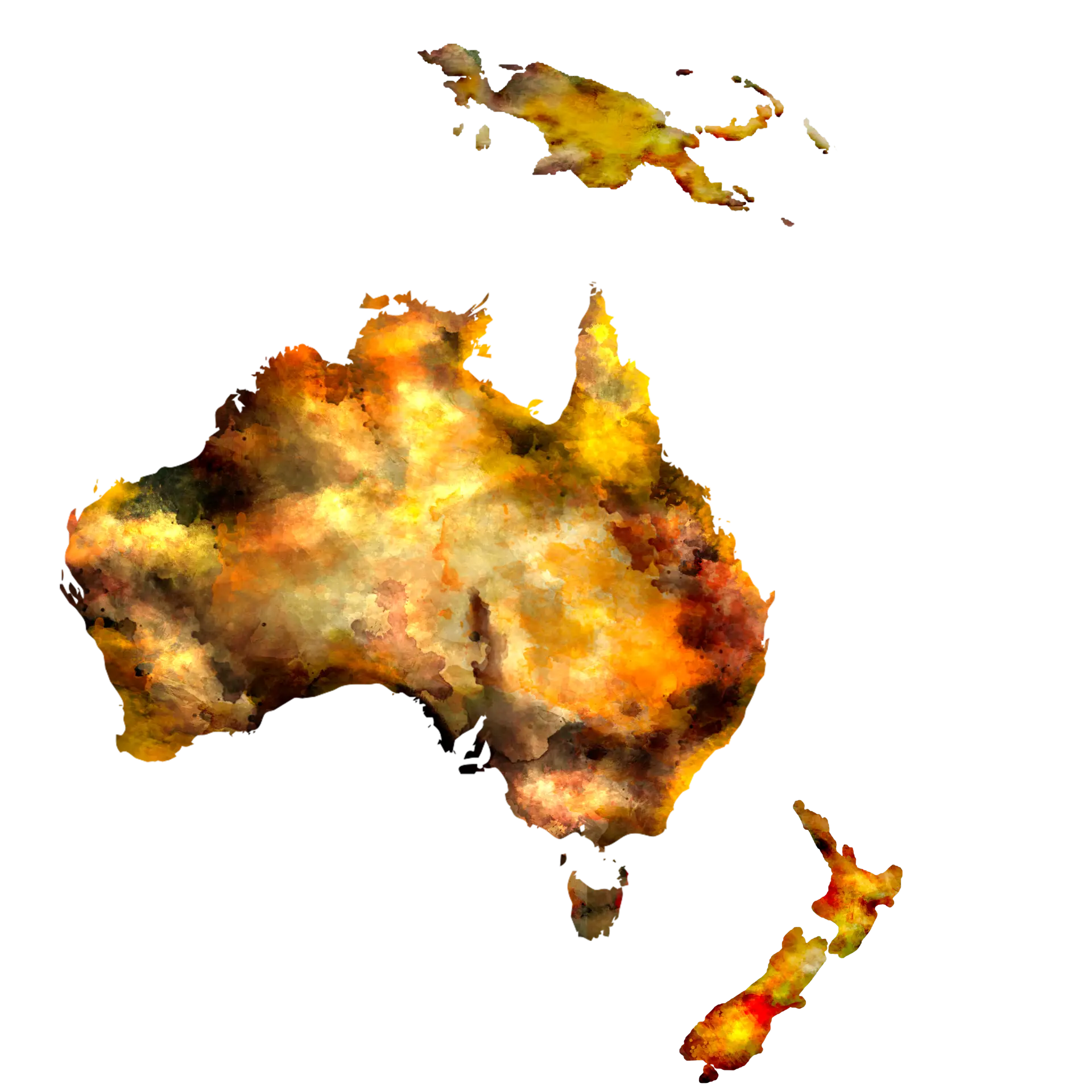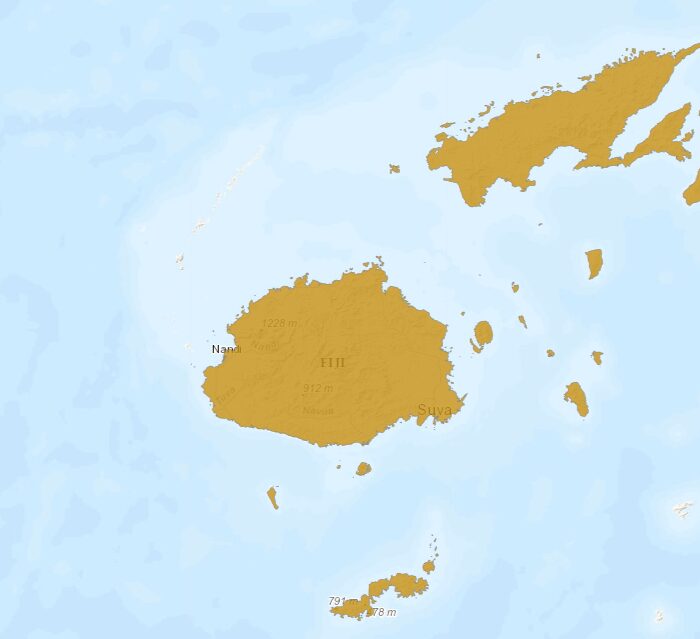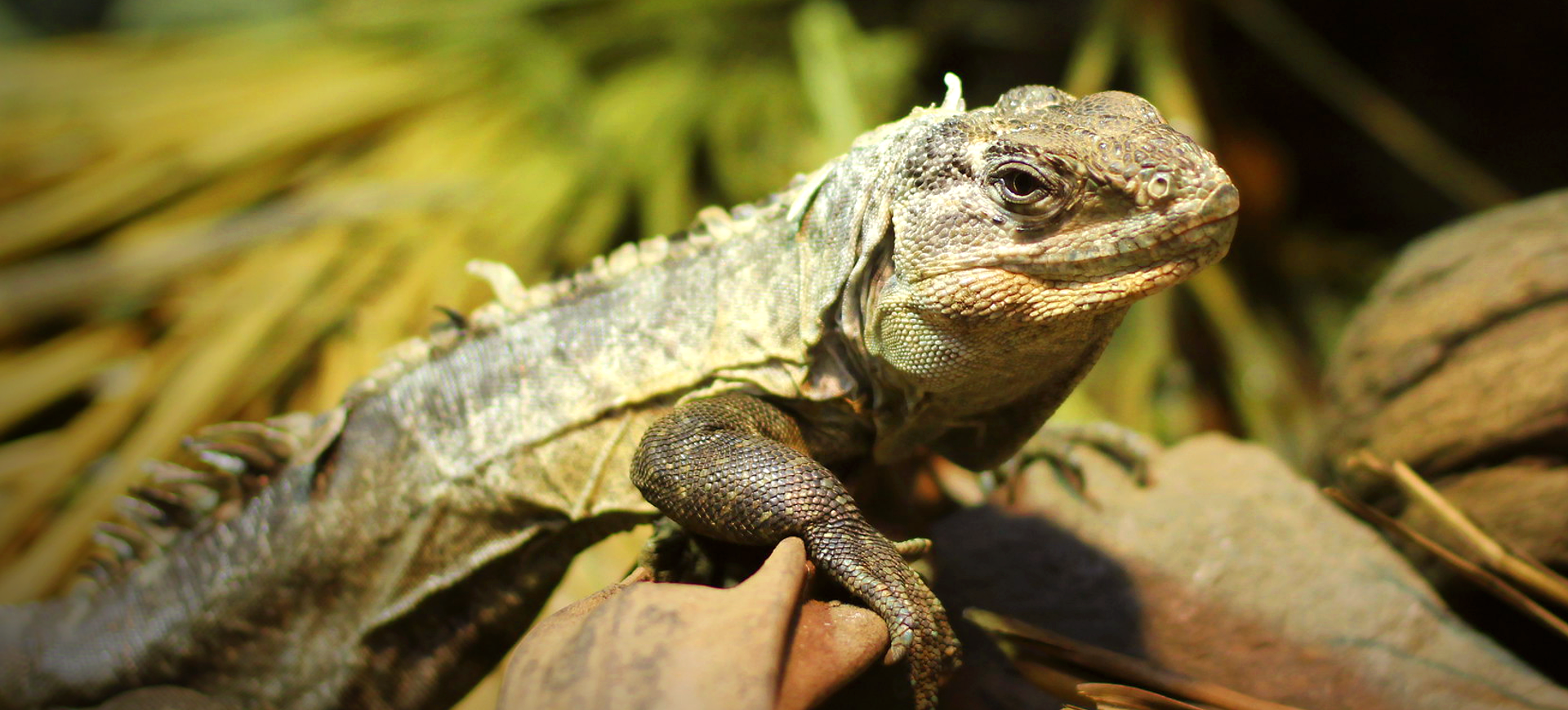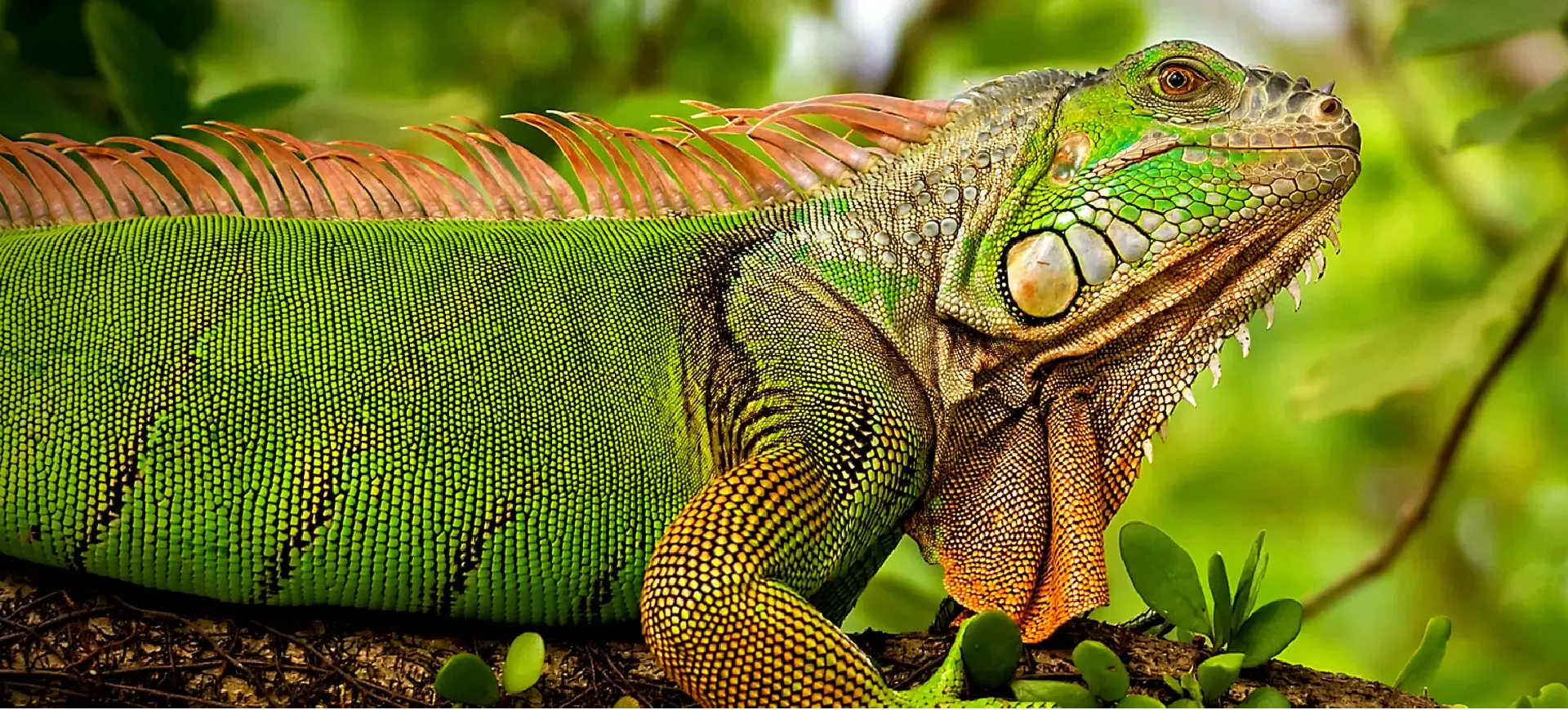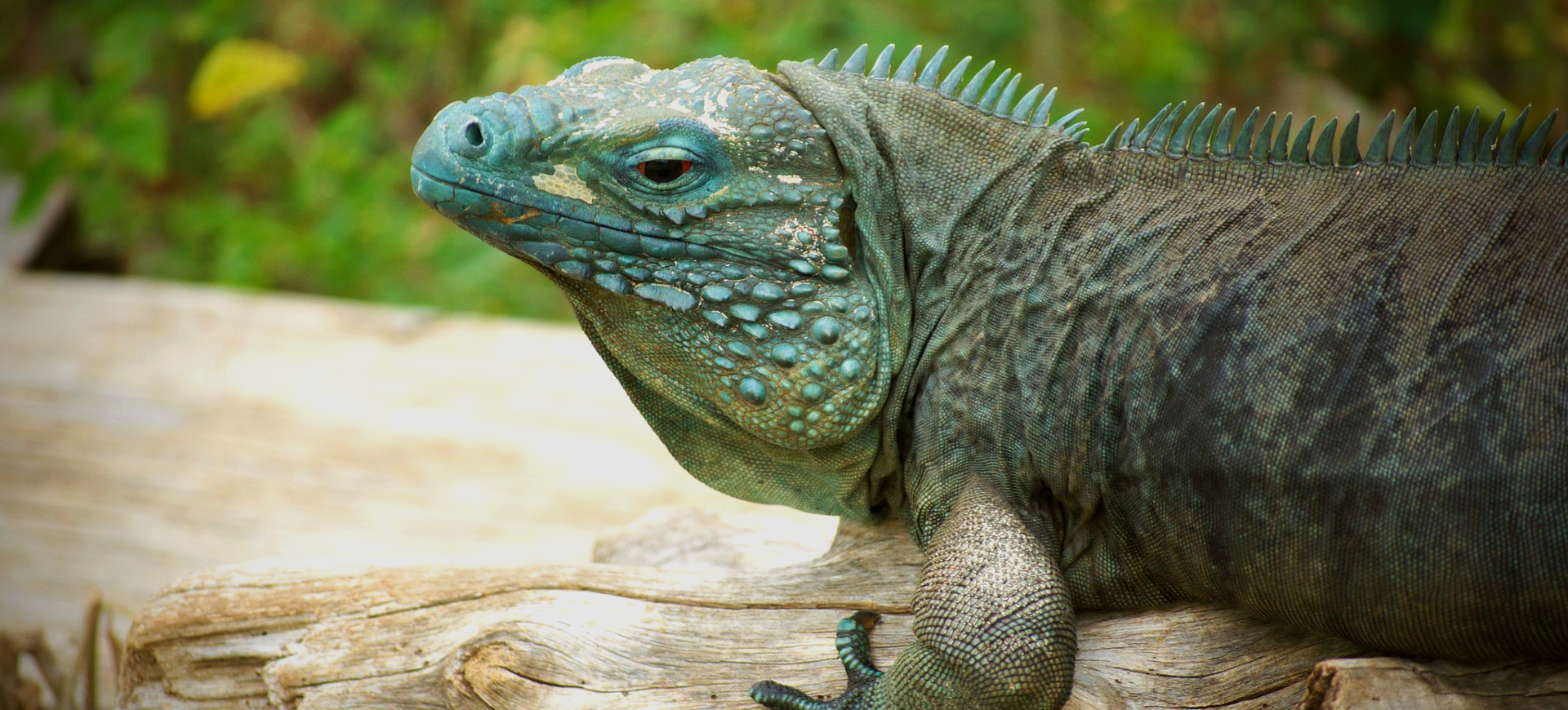Overview
The Fiji banded iguana (Brachylophus fasciatus) is an iconic species native to the islands of Fiji and some parts of Tonga. This striking reptile is known for its vibrant green color and distinct blue or white bands that run across its body, which are more pronounced in males than in females. Primarily arboreal, these iguanas spend most of their time in the trees of tropical and subtropical moist broadleaf forests. Their vivid coloration makes them one of the most visually distinctive iguanas and serves as excellent camouflage among the foliage.
Adult Fiji banded iguanas are relatively large for tree-dwelling lizards, typically measuring about 60 centimeters in total length, including the tail. They exhibit sexual dimorphism, with males generally being larger and more brightly colored than the more subdued females. This species is diurnal, spending the daylight hours actively foraging for food, basking in the sun, or interacting with other iguanas. At night, they retreat to the safety of the tree branches to sleep.
Reproduction in Fiji banded iguanas involves courtship behaviors that are quite elaborate, including head bobbing and nuzzling by the males. Females lay clutches of three to six eggs buried in soft soil or leaf litter. The eggs incubate for approximately six to eight months, during which the female may guard the nest site against potential predators and other threats.
Taxonomy
Kingdom
Phylum
Class
Order
Family
Genus
Species
Type
Current distribution:
Despite being native to a relatively small geographical area, the Fiji banded iguana’s distribution has become increasingly restricted due to significant habitat loss and degradation. Their populations are now primarily concentrated on several Fijian islands, with smaller, more isolated populations in Tonga. The fragmentation of their habitat, driven by agricultural expansion, the introduction of invasive species, and urban development, severely threatens their numbers and genetic diversity.
Conservation efforts have become crucial to counter the threats facing the Fiji banded iguana and ensure its survival. Protecting its natural habitats is essential for maintaining the current population and ensuring the continued existence of this visually striking species. Various conservation initiatives aim to restore and connect fragmented habitats, manage invasive species, and implement legal protections to safeguard these unique iguanas from further decline.
Physical Description:
The Fiji banded iguana is known for its striking appearance, featuring a bright green base color interspersed with horizontal blue or white bands. These bands may vary in number and thickness between individuals, with males typically exhibiting more vibrant and numerous bands than females. The skin of these iguanas is smooth, and their body is slender, with a long tail that assists in balance and agility in their arboreal habitat. They possess long, sharp claws essential for climbing and a row of spiny scales along their back, which are more pronounced in males.
In addition to their distinctive banding, these iguanas have large, round eyes that give them a wide field of vision—a crucial adaptation for spotting predators and prey from high in the trees. Their faces are characterized by a short snout and expressive brows, adding to their charismatic presence. The overall body structure of the Fiji banded iguana is designed for an arboreal lifestyle, allowing for swift movements through the branches and leaves of their forest homes.

Lifespan: Wild: ~12 Years || Captivity: ~20 Years

Weight: Male: 10-14 lbs (4.5-6.4 kg) || Female: 8-12 lbs (3.6-5.4 kg)

Length: Male: 24-30 in (61-76 cm) || Female: 22-28 in (56-71 cm)

Height: Male: 24-28 in (61-71 cm) || Female: 22-26 in (56-66 cm)

Top Speed: 15 mph (24 km/h)
Characteristic:
Native Habitat:
The native habitat of the Fiji banded iguana encompasses the lush, tropical, and subtropical moist broadleaf forests predominantly found in Fiji and Tonga. These verdant environments are crucial for iguanas as they offer high humidity and warm temperatures ideal for them. Furthermore, the rich vegetation supports many food sources and provides essential shelter that shields them from various elements and predators.
Given their arboreal lifestyle, Fiji banded iguanas are almost exclusively found in the treetops and rarely venture to the forest floor. This adaptation allows them to avoid numerous ground-level predators and explore the upper canopy freely. The dense leaves and branches serve as a safe haven and enable effective thermoregulation as the iguanas bask in the dappled sunlight filtering through the forest canopy.
Climate Zones:
Biomes:
Biogeographical Realms:
Continents:
Countries:
Diet:
Diet & Feeding Habits:
The Fiji banded iguana is primarily herbivorous, consuming various leaves, flowers, fruits, and occasionally tender shoots. Their diet is crucial for nutrition and hydration, as these iguanas derive most of their water intake from the food they eat. They have a particular preference for the leaves of certain tree species, which vary depending on their specific island habitat. During periods of abundant food, they may eat copiously to store fat reserves for leaner times.
In captivity, Fiji banded iguanas require a diet closely mimicking their natural food sources to maintain health and vitality. This includes providing a variety of greens, vegetables, and fruits to ensure a balanced intake of nutrients. Supplements such as calcium and vitamins are often added to their food to prevent nutritional deficiencies. The feeding strategy for these iguanas must consider their natural eating habits and the nutritional content of their diet to avoid common health issues like metabolic bone disease.
Mating Behavior:
Mating Description:
The Fiji banded iguana’s mating system is polygynous, and dominant males may mate with multiple females during the breeding season. Males display distinct courtship behaviors, including bobbing heads and flaunting brightly colored bodies to attract females. The bright coloration of the males plays a crucial role in these displays, as more vividly colored males are often more successful in attracting mates.
Females lay between three and six eggs, which they bury in soft, moist soil or leaf litter, protecting them from predators and environmental extremes. The long incubation period allows the embryos to develop fully, emerging as fully formed miniatures of the adults. The female may remain near the nesting site during incubation, although they do not typically exhibit extensive parental care once the eggs hatch.
Reproduction Season:
Birth Type:
Pregnancy Duration:
Female Name:
Male Name:
Baby Name:
Social Structure Description:
The social structure of Fiji banded iguanas is relatively solitary, with individuals typically interacting primarily during the mating season. Outside of breeding, they are territorial and may show aggression towards others of the same sex. This solitary behavior helps reduce competition for food resources among individuals, which is crucial in their nutrient-limited environments.
In the wild, Fiji banded iguanas communicate through visual signals, such as changes in coloration and physical displays. These communications are essential for maintaining territory boundaries and for mating rituals. Observations suggest that while they do not form social groups, their populations have a level of spatial organization, likely driven by environmental factors and the distribution of resources.
Groups:
Conservation Status:
Population Trend:
The population of Fiji banded iguanas has been declining over recent decades, primarily due to habitat loss, predation by introduced species, and the illegal pet trade. These factors have led to fragmented populations often isolated on small islands or in particular areas of larger islands, reducing genetic diversity and increasing vulnerability to environmental changes. Conservation programs, along with breeding programs, are essential to stabilize and hopefully increase the population through habitat preservation and restoration.
Conservation efforts for Fiji banded iguanas include habitat protection, legal protection from international trade (CITES Appendix I), and local education programs to prevent poaching. Captive breeding programs have also been established to help bolster the population and maintain genetic diversity. These programs often collaborate with local and international conservation organizations to ensure the long-term viability of the species in the wild.
Population Threats:
The Fiji banded iguana faces numerous threats that jeopardize its survival, with habitat destruction at the forefront. Agricultural expansion, logging activities, and the development of human settlements have led to a significant loss of the natural environments on which these iguanas depend. These activities reduce the available space for these iguanas to live and fragment their habitats, making it difficult for them to find mates and decreasing genetic diversity within the population.
Additionally, invasive species such as rats and feral cats have become a major concern, as they prey on the iguanas and their eggs, drastically reducing the young’s survival rates. Climate change compounds these issues by altering the environmental conditions within their habitats, potentially impacting the availability of their natural food sources and modifying the microclimates critical for their thermoregulation. These changes threaten to disrupt the delicate ecological balance within their environments, putting the future of the Fiji banded iguana in even greater peril.
Conservation Efforts:
Conservation efforts for the Fiji banded iguana are comprehensive and multifaceted, focusing on several crucial areas to ensure the species’ survival. Stringent legal protections have been put in place, including the iguana’s listing under CITES Appendix I, which restricts international trade of the species. Habitat conservation efforts are actively pursued, restoring natural environments and protecting existing habitats from further degradation. Moreover, controlling invasive species that threaten iguanas and their eggs is a key component of these conservation strategies, supported by local enforcement and international expertise.
On the educational front, programs targeting local communities are vital in fostering an understanding of the importance of the Fiji banded iguana and the broader ecological implications of its decline. These educational initiatives aim to reduce local threats such as poaching and to engage the community in ongoing conservation efforts. Some islands have also taken the proactive step of establishing nature reserves specifically designed to provide safe havens for these iguanas, where they can thrive with minimal human interference and where ecosystems can be managed to support their long-term survival. These protected areas benefit the iguanas and preserve the rich biodiversity that characterizes these unique island ecosystems.
Additional Resources:
Fun Facts
- Fiji-banded iguanas are capable of slight color change when threatened.
- They have a third “eye,” a parietal eye on the top of their heads, which is sensitive to changes in light and dark.
- This species is one of the few iguanas found outside the Americas.
- In Fijian culture, they are often considered totems associated with strength and resilience.
- The Fiji-banded iguana can lose and regenerate its tail, a common defense mechanism against predators.
- Their tongues can flick out to sense chemicals in the air, locate food and detect threats.
- Unlike many reptiles, Fiji banded iguanas have a high parental investment, with females guarding nests.
- They are featured on Fijian banknotes as a symbol of the country’s natural heritage.
- Juvenile Fcountry’sd iguanas are born without bands; they develop these as they mature.
- Their lifespan in captivity can extend significantly when they are provided with optimal care and a suitable environment.

